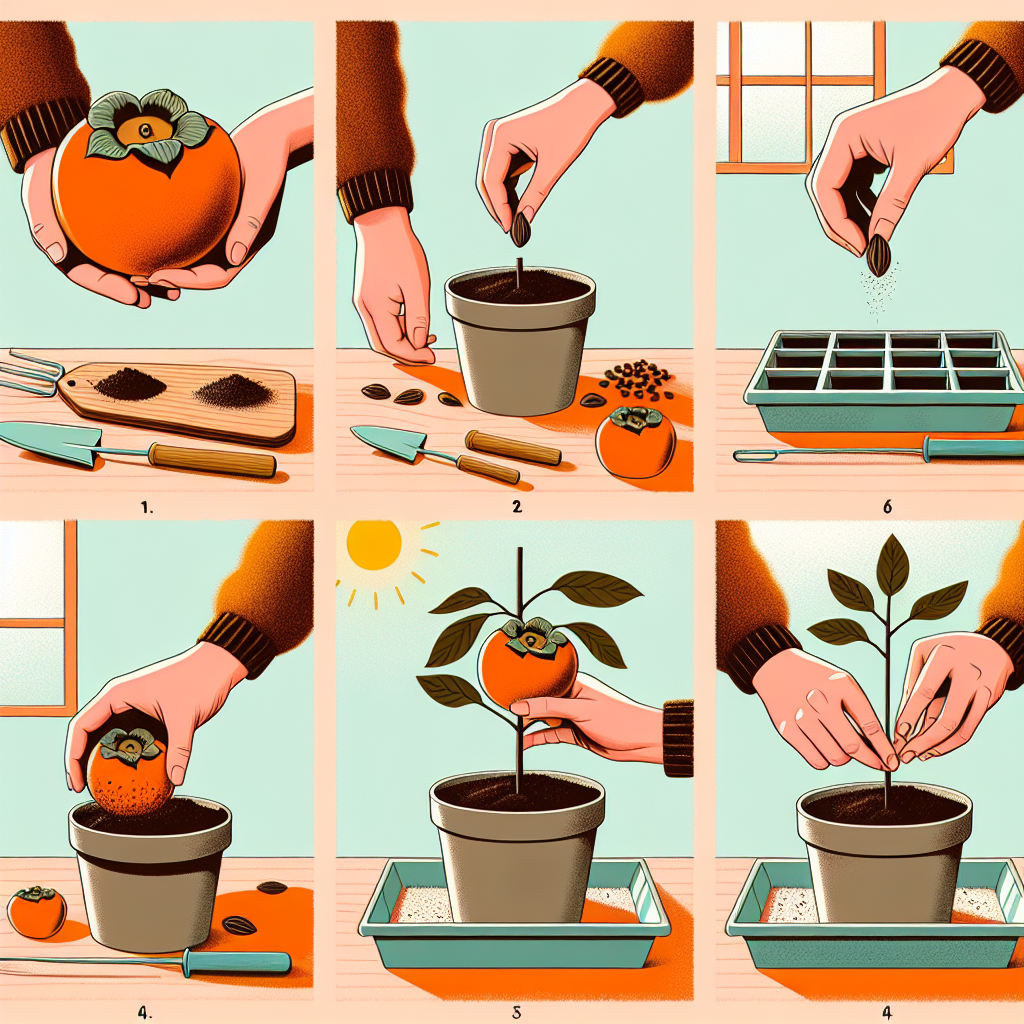
How to plant persimmon seeds
Introduction to Persimmons
Persimmons are delightful fruits that are both sweet and nutritious. Belonging to the genus *Diospyros*, these fruits have gained popularity for their unique flavor and health benefits. They thrive in warm climates and can add a beautiful aesthetic to your garden. But how do you start growing these delicious fruits? For many, the journey begins with understanding how to plant persimmon seeds, a process that can yield rewarding results when executed correctly.
Why Grow Persimmons?
- Nutritional Value: Persimmons are rich in vitamins A and C, fiber, and antioxidants.
- Delicious Flavor: The sweet taste of persimmons can enhance a variety of dishes, from salads to desserts.
- Aesthetic Appeal: With their vibrant color and unique shape, persimmons can beautify any garden.
- Low Maintenance: Once established, persimmons require relatively little care compared to other fruit trees.
Types of Persimmons
Before diving into cultivation, it's essential to know that there are two primary types of persimmons:
- Astringent Persimmons: These fruits must be fully ripe before consumption; otherwise, they taste bitter. An example is the *Danja* variety.
- Non-Astringent Persimmons: These can be eaten while still firm and remain sweet. A popular variety is the *Fuyu* persimmon.
Gathering Your Materials
To successfully plant persimmon seeds, you'll need a few essential materials:
- Fresh Persimmon Seeds: You can extract these from ripe persimmons.
- Potting Soil: Choose a well-draining mix.
- Containers: Small pots or seed trays for planting.
- Plastic Wrap: To create a humid environment.
- Watering Can: For regular watering.
Steps for Planting Persimmon Seeds
Now that we've gathered our materials, let's go over the step-by-step process:
1. Extracting Seeds
The first step in how to plant persimmon seeds is obtaining the seeds themselves. To do this:
- Select a ripe persimmon.
- Slice it open and remove the seeds.
- Rinse the seeds under water to remove any fruit residue.
- Dry the seeds on a paper towel for a day or two.
2. Pre-treating the Seeds
For optimal germination, persimmon seeds benefit from a pre-treatment process known as stratification:
- Place the seeds in a moistened paper towel.
- Wrap them up and place them in a sealed plastic bag.
- Store the bag in the refrigerator for about 30 days.
3. Planting the Seeds
After the cold stratification process, you're ready to plant the seeds:
- Fill your containers with potting soil, leaving about an inch of space at the top.
- Moisten the soil lightly with water, ensuring it is damp but not soaked.
- Plant the seeds about an inch deep in the soil.
- Cover the seeds with soil and gently pat it down.
- Water the soil lightly again.
4. Creating a Humid Environment
To encourage germination, it’s essential to maintain humidity:
- Cover the containers with plastic wrap to trap moisture.
- Poke small holes in the wrap for airflow.
- Place the containers in a warm, sunny location, but avoid direct sunlight.
5. Watering and Care
As the seeds germinate, they’ll require regular care:
- Keep the soil consistently moist but not soggy.
- Remove the plastic wrap once seedlings appear.
- When seedlings reach about 4-6 inches tall, they can be transplanted into larger pots.
Transplanting Your Seedlings
Once your seedlings have established root systems and are several inches tall, they will be ready for transplantation.
- Select a planting site that receives full sunlight.
- Dig a hole twice the size of the seedling’s root ball.
- Carefully remove the seedling from its container, taking care not to damage the roots.
- Place the seedling in the hole, ensuring that the top of the root ball is level with the soil surface.
- Backfill the hole with soil and water thoroughly.
Care and Maintenance of Young Persimmon Trees
Caring for your newly transplanted persimmon tree is crucial for its success:
- Watering: Regularly water the tree, particularly during dry spells.
- Mulching: Apply mulch around the base to retain moisture and suppress weeds.
- Fertilizing: Feed the tree with a balanced fertilizer in the early spring.
- Pruning: Prune the tree in late winter or early spring to promote healthy growth.
Pest and Disease Management
Like all plants, persimmons may be susceptible to certain pests and diseases. Monitoring your tree closely can help prevent potential issues:
- Watch for pests like aphids and spider mites.
- Check for diseases such as root rot or leaf spot.
- Utilize organic pesticides or manual removal for pest control.
Harvesting Your Persimmons
Patience is key when growing persimmons. Depending on the variety and growing conditions, it typically takes 3-5 years for a persimmon tree to bear fruit. Here’s how to determine when they’re ready for harvest:
- Astringent varieties should be harvested when fully ripe and soft.
- Non-astringent varieties can be eaten while still firm.
- Check the color; ripe persimmons turn vibrant orange or yellow.
Conclusion
Growing persimmons from seeds is not only a gratifying experience but also a journey filled with learning and patience. By following the steps outlined in this article, you’ll be well on your way to enjoying your very own homegrown persimmons. Remember to take care of your seedlings, protect them from pests, and soon enough, you’ll be harvesting delicious, nutritious fruits. So, when you’re ready to dive into gardening, consider these charming trees and start your adventure today!
By Guest, Published on August 9th, 2024